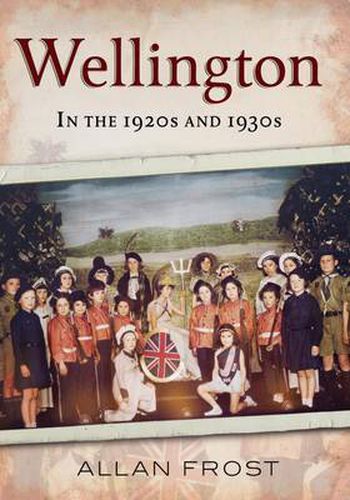Readings Newsletter
Become a Readings Member to make your shopping experience even easier.
Sign in or sign up for free!
You’re not far away from qualifying for FREE standard shipping within Australia
You’ve qualified for FREE standard shipping within Australia
The cart is loading…






This collection of archive images, many never before published, documents life in the ancient Shropshire market town of Wellington between two World Wars. Entertaining and informative, this book reveals how the people of Wellington recovered from the effects of one devastating war before they were obliged to make preparations for coping with another. It shows long-established industries continuing to survive during the interwar period, and an abundance of family run shops helping to retain the traditional character of the town, then the main centre for commerce and entertainment in this part of the county. New forms of public and private transport brought immediate change, while local Councils embraced developments required for new national legislation and prepared the way for poorly conceived town plans which would later blight the economic landscape. Throughout this period of change, Wellingtonians displayed remarkable resilience. The Great War had been regarded as ‘the war to end all wars’, and it was with this belief that a rise in population occurred, schools thrived and a wide range of sporting and cultural events blossomed.By 1939, many folk had money to spare on dances, theatre visits and other pastimes. Then another period of austerity and heartbreak began.
$9.00 standard shipping within Australia
FREE standard shipping within Australia for orders over $100.00
Express & International shipping calculated at checkout
This collection of archive images, many never before published, documents life in the ancient Shropshire market town of Wellington between two World Wars. Entertaining and informative, this book reveals how the people of Wellington recovered from the effects of one devastating war before they were obliged to make preparations for coping with another. It shows long-established industries continuing to survive during the interwar period, and an abundance of family run shops helping to retain the traditional character of the town, then the main centre for commerce and entertainment in this part of the county. New forms of public and private transport brought immediate change, while local Councils embraced developments required for new national legislation and prepared the way for poorly conceived town plans which would later blight the economic landscape. Throughout this period of change, Wellingtonians displayed remarkable resilience. The Great War had been regarded as ‘the war to end all wars’, and it was with this belief that a rise in population occurred, schools thrived and a wide range of sporting and cultural events blossomed.By 1939, many folk had money to spare on dances, theatre visits and other pastimes. Then another period of austerity and heartbreak began.